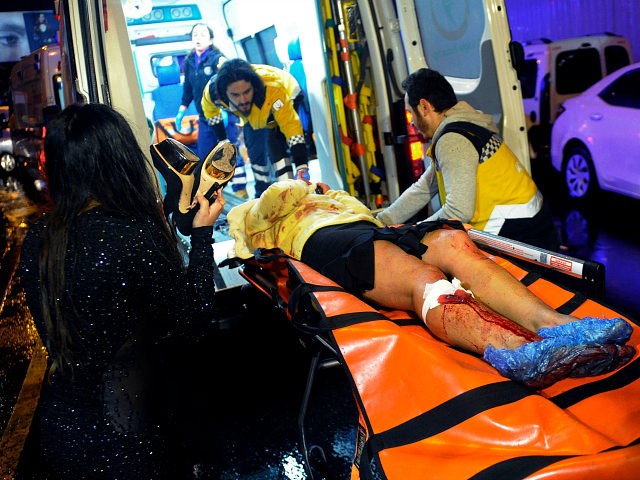Terrorists have developed a fondness for attacking nightclubs, and it’s no surprise. They are perfect venues for mass murder, with tightly-packed crowds of people and limited routes of escape for the victims.
Ambient noise and lighting add to the confusion of terrorist attacks. Police have a difficult time entering clubs during the attack to engage the assailant, with so many bystanders in the way.
Also, nightclubs are a potent symbolic target for Islamist terrorists, given their severe doctrinal disapproval of what occurs within them. In many cases, the targeted establishments have been popular with foreign visitors, adding an international component to the bloodshed. A few killers who don’t appear to be linked to international terrorism have also staged mass-casualty events at crowded bars.
Here are some of the recent attacks on nightclubs, beginning with the latest atrocity.
January 2017 — Reina nightclub, Istanbul, Turkey: 39 were killed at last count, plus about 70 wounded. There were reportedly 600 people packed into the club for New Year’s Eve celebrations when the attacker struck, murdering a security guard and police officer outside before spraying bullets into the crowd. The gunman reportedly took time to finish off some of the wounded. Citizens of 14 different countries were among the dead. The venue has long been popular with both local and foreign celebrities. ISIS has claimed responsibility for the attack.
June 2016 — Pulse nightclub, Orlando, Florida: 49 were killed and 53 wounded. The popular gay club was at full capacity for a Latin night celebration, with about 320 people inside. Shooter Omar Mateen has been described as laughing while he shot wounded victims. He swore allegiance to ISIS during the assault.
June 2016 — Movida nightclub, Puchong, Kuala Lumpur: A grenade was thrown into the club during the broadcast of a soccer match, severely injuring eight people. About 20 people were said to be gathered in the club at the time of the attack. It is regarded as the first ISIS attack on Malaysia.
January 2016 — Ten X nightclub, Calgary, Canada: Two heroic bouncers acted quickly to subdue gunman Mohamed Salad when he began firing into the establishment with a pistol, so there was only one injury, but the victim suffered damage to his liver, gallbladder, and colon, and lost a kidney. There were about 300 people inside at the time. The club went out of business a month later, citing the “recent unfortunate events that unfolded at the venue.” Salad told the court he wasn’t sure why he attacked the nightclub because he was drunk and high on ecstasy, and the incident was not treated as a terrorist attack.
January 2016 — Simta bar, Tel Aviv, Israel: Two were killed and seven wounded when Arab-Israeli Nashat Milkhem opened fire with an Uzi submachine gun on New Year’s Day. He was caught on security camera footage preparing his weapon in a nearby grocery store, producing it from a bag that also proved to hold a copy of the Koran. Milkhem later killed a taxi driver and was ultimately shot dead by police. He has been described as mentally disturbed by members of his family, and eyewitnesses say he was “smiling calmly while spraying bullets at random” during the attack. Israeli authorities classified him as a terrorist who acted out of “nationalistic” motives but was not directly linked to Hamas, ISIS, or other terror groups.
December 2015 — El Sayad restaurant, Cairo, Egypt: 16 people were killed and three others sustained injuries when firebombs were tossed into a club in the Agouza neighborhood on the outskirts of Cairo, an area said to be popular with expatriates. The attack occurred very early in the morning, so few people were inside; the death toll was so high because the establishment was located in a basement with few escape routes. Most of the victims died from smoke inhalation. The attack was described by Egyptian authorities as a criminal action that began when there was an altercation with club staff, rather than a terrorist attack.
November 2015 — Bataclan concert hall, Paris, France: A trio of ISIS gunmen slaughtered 90 people and injured 400. The venue had a capacity of about 1,500 people. The killers opened fire on their victims from behind while they were enjoying a concert, so many in the crowd didn’t realize they were under attack until the band on stage saw what was happening and reacted. Hostages were taken for hours during the ordeal. Some of the survivors were still hospitalized a year later.
November 2015 — Le Carillon bar, Paris, France: The same wave of ISIS attacks on Paris that hit the Bataclan also targeted the Le Carillon bar and nearby Le Petit Cambodge restaurant, killing 20 people in total. Some of the bullets fired by the frenzied attackers missed the bar and struck the hospital next door. The Cafe Le Carillon reopened two months later, decorated with memorials to the slain.
March 2015 — La Terrasse bar, Bamako, Mali: A masked gunman screamed “Allahu akbar!” and “Death to whites!” as he opened fire on a bar popular with foreigners in Mali’s capital, killing 5 and wounding 8. Three of the dead were Europeans. One was a policeman killed when the departing jihadi threw grenades at security forces. An Islamist group linked to al-Qaeda claimed responsibility.

COMMENTS
Please let us know if you're having issues with commenting.